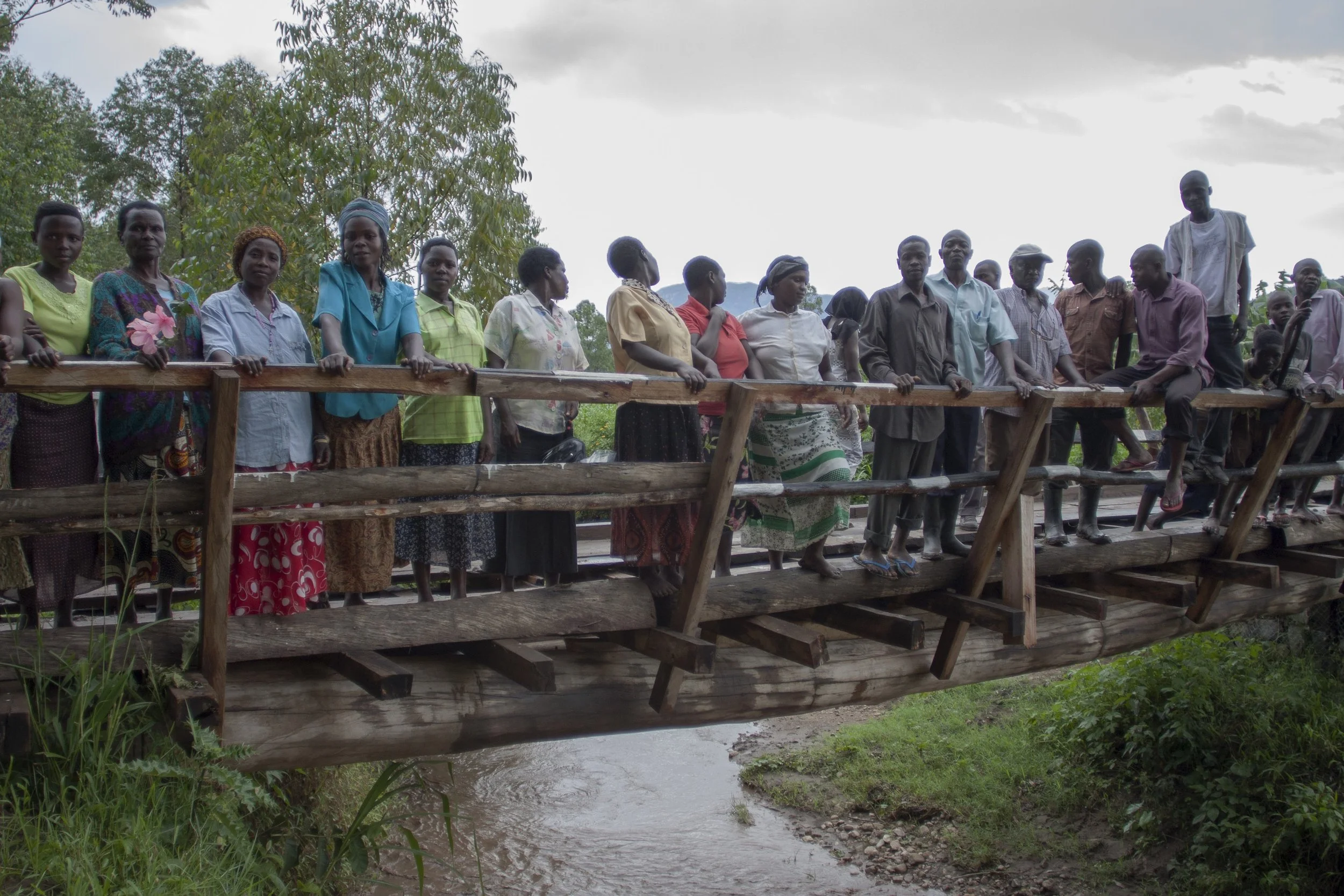A Bridge Over Troubled Water
How one woman’s remarkable quest for agency led her community to realize social and economic gains.
Rose speaks to her community.
In eastern Uganda, anchored to the slopes of Mt. Elgon, lies the village of Nasitsape. Near its center sits a house with a large, homemade sign on its outer wall. The sign is an ad for Spark, and the home is Rose’s. A farmer, wife, and mother, today Rose is the treasurer of Nasitsape’s community savings group, elected to this position by the village. She is a community leader — but it wasn’t always this way.
A small village of about 50 homes, Nasitsape is cut off from the rest of Manafwa district by a small river, separating it from the closest road, school, and clinic. To cross the river, community members must forge it. The only alternative is a path that adds hours and miles to the journey. In the rainy season, the river floods, and community members have drowned attempting to cross it — including several children.
Most residents from Nasitsape depend on agriculture for their livelihoods and grow coffee, sweet potatoes, bananas, and beans. When Spark first approached the community, they were quick to decide on their project: a bridge. A reliable route across the river would open new markets to their products, provide easier access to social services such as schools and health clinics, and offer safer ways for community members to travel.
The bridge in Nasitsape.
With support from Spark’s facilitated collective action process (FCAP), the community built that bridge. The FCAP is an equitable village development process that strengthens citizen engagement, improves rural livelihoods, and funds a community project. The FCAP centers communities, enabling their control over planning, decision making, and resource allocation. The bridge cost $3,000, paid for by the microgrant, but that wasn’t the most significant change in Nasitsape.
“There is a difference in my life now,” Rose recalls. “I didn't have confidence before, not even to speak my name. Now I can confidently speak up.” The FCAP is designed specifically to empower women leaders like Rose, and she remembers when the Spark facilitator first knocked on her door to invite her to attend the planning meetings. Rose had never before participated in a public forum. Her husband thought she should take care of their children and run the home.
In fact, most women in the community had never attended a public meeting. In Nasitsape, like many traditional Ugandan communities, men typically made the decisions that affect the village. Those men initially forbade their wives from attending the weekly FCAP meetings, and they wielded gender-based violence to enforce it. Rose, who had attended the first few meetings, stopped coming, as did many women.
Displaying the qualities that would later get her elected to leadership roles in the village, Rose quietly organized side meetings with other women who also wanted to participate. At these meetings, they brainstormed potential solutions to convince their husbands to allow them to attend the meetings. In the end, Rose sold the idea to her husband by explaining how the bridge project would increase his access to bigger markets for his milk business.
Rose successfully advocated for herself and then relayed the idea to the other women, who were similarly successful. Men who had attended the FCAP meetings and supported the process also worked to mobilize the men who were unsure about it. Attendance picked up. The project moved forward.
After Rose returned, more women started attending the weekly meetings. She also began speaking at the meetings, arguing in favor of the bridge project. Rose even convinced her husband to attend. Once they had settled on the project, the community elected Rose treasurer of the group that managed the grant, and her husband donated his labor to support the bridge’s construction.
Rose’s sub-group of women continued to meet after the bridge was completed. They started a chicken-rearing business, using the proceeds to seed a small savings and loan group. It was so successful that others in the community asked to join. Today, nearly ten years later, the village savings group has 45 members, of which 35 are women. And Rose is its treasurer.
“Many women, including myself, have benefited from the savings group,” says Rose. “We don't have to wait on our husbands for support. We can borrow from the group and address our immediate needs.”
Rose’s leadership inspired other women to take a more active role in their community’s governance, despite the domestic violence they faced. Nasitsape used the weekly meetings to resolve household power conflicts and reduce gender-based violence in the community by articulating women’s social and economic contributions.
“The domestic violence that we had at the start of the FCAP is no more,” Rose says proudly.
In Nasitsape today, the community is working on improvements to the bridge to sustain it another decade. Household incomes are up, more kids are in school, and the scourge of gender-based violence is a distant memory.
As Rose notes, smiling, “Our husbands actually encourage us to attend the meetings now because of the difference they have seen.”
It’s impossible to miss the remarkable journey she has completed, nor the incredible trajectory her efforts have set Nasitsape on. It is illustrative of the immense potential communities can unlock through inclusive civic engagement. While Nasitsape’s journey continues, its development gains sustain.
The community meetings continue in Nasitsape.



